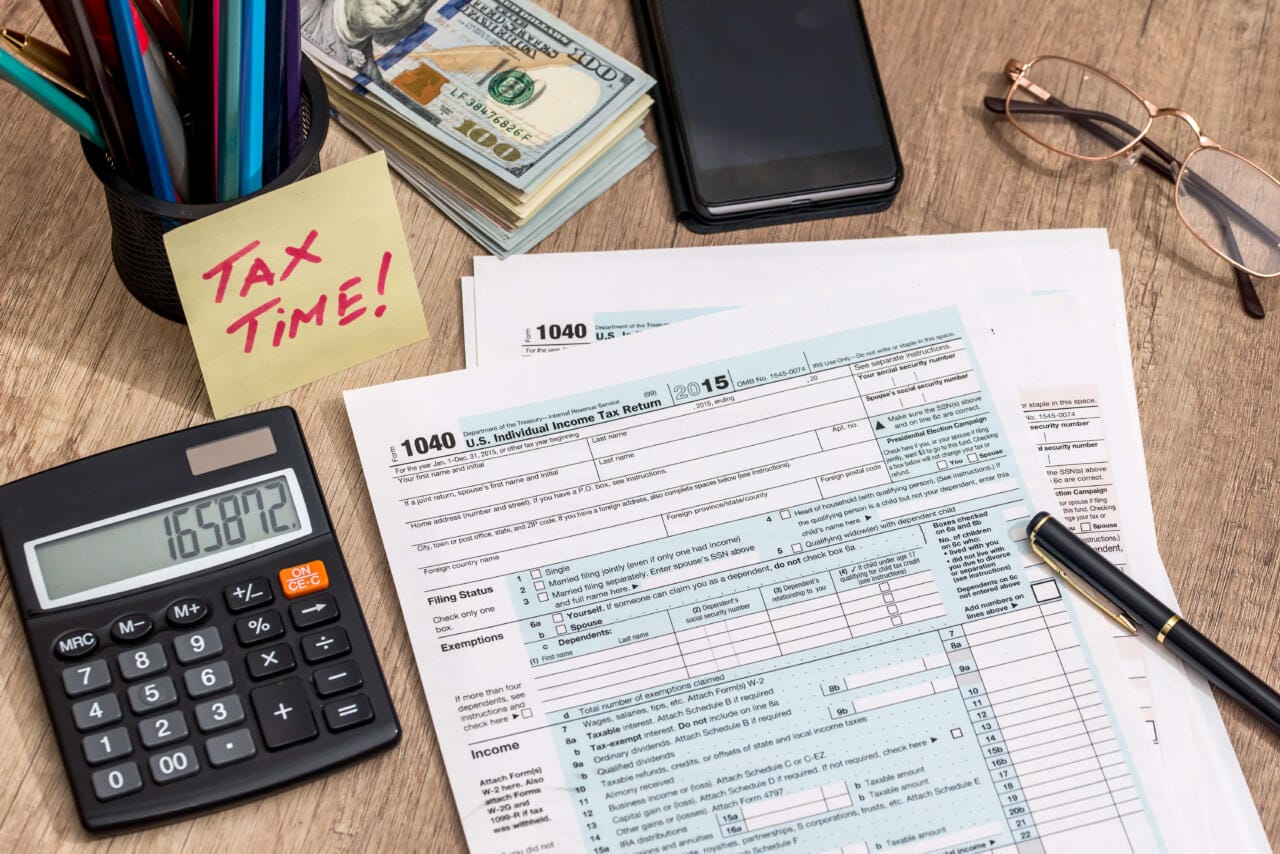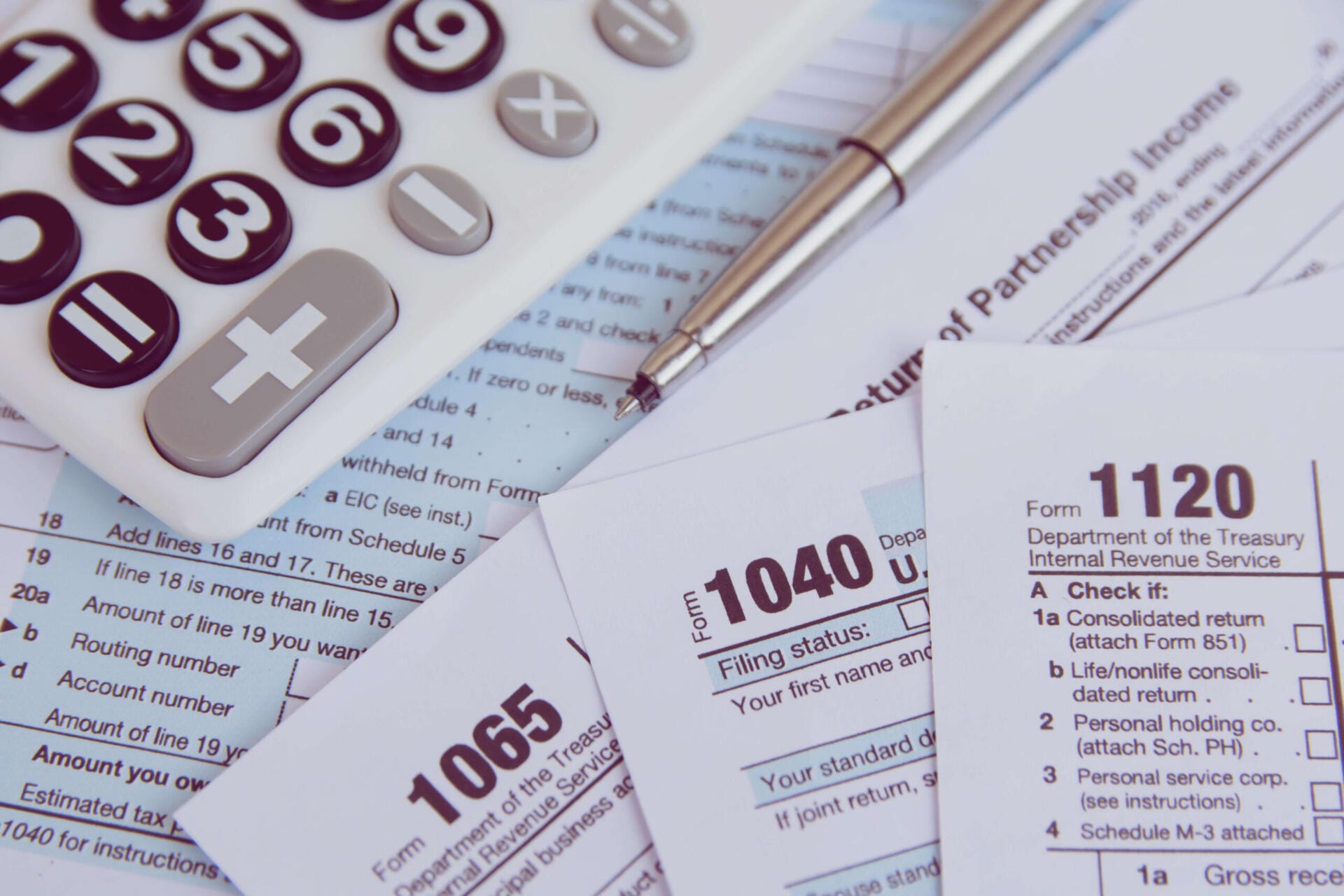How to File Taxes as a CPR Instructor or CPR Business

There are a lot of perks of being a CPR instructor and working for yourself. Personally, I enjoy the flexibility in my schedule and having control of my work life balance. However, being self employed requires organization, record keeping, and responsibilities like filing taxes. Let’s dig in and talk about how to make filing taxes a CPR instructor as easy as possible. We will also discuss filing taxes as a CPR business vs. a contracted CPR instructor.
Please note, we are not tax professionals. You should seek out a professional to help you make the best decisions and walk you through the process as it applies to your particular circumstances. However, it can be difficult to navigate the industry jargon out there. Our hope is to help you get your feet under you so you have a basic understanding of what you need to do.
The following information is going to discuss how to file taxes as a CPR instructor if you are self employed. Keep in mind, not all CPR instructors may be self employed. If you teach CPR as an employee for another company, then your income has likely already been taxed. Generally, you are considered self-employed if you teach CPR as a sole proprietor or an independent contractor.
Do I Need a Business License?
If you are working for yourself, the answer is yes. Nearly all local governments require that every business within the city or county apply for a basic ‘business license’ and pay a fee. It does not matter how much you are making, or if you have an office or not. Even if you’re running a sole proprietorship out of your car, you need to register your business.
What Taxes Do I have to Pay as a CPR Instructor?
Before we jump into how to file your taxes, let’s talk about the types of taxes you have to pay. These include:
- Federal, state, and local income tax
- Self-employment tax (Medicare and Social Security taxes)
When you are self employed, it’s your responsibility to pay the self-employment tax. Because you do not have an employer to withhold and pay on your behalf, you must do so.
First Step: Figure out your net profit or net loss.
To determine if you are subject to self-employment tax and income tax, you must figure your net profit or loss from your business. Find your ‘net’ by subtracting your business expenses from your business income.
If your expenses are less than your income, the difference is net profit and becomes part of your income. If your expenses are more than your income, the difference is a net loss. You usually can deduct your loss from gross income so you are taxed fairly.
If your net earnings from self-employment were $400 or more, you have to file an income tax return.
What Expenses Can I Write Off?
There are plenty of deductions for independent contractors and business owners. While you may not qualify for every deduction, it’s important to be aware of all opportunities so you don’t miss out on something that could reduce your tax liability.
Here is a list of the most common expenses independent contractors can deduct. It’s likely that several of these will pertain to you.
- Self employment tax. You can claim 50% of what you pay in self-employment tax as an income tax deduction. (For example, a $10,000 self-employment tax payment reduces taxable income by $5,000.)
- Home Office Expenses (A percentage of utilities, office supplies, home repairs, and insurance)
- Travel Expenses (mileage, airplane tickets, car rental, and hotel)
- Meals (50% of your meal costs can be written off as business expenses)
- Advertising and Marketing
- Legal and Accounting Services
- Business Internet
- Cell Phone Bill
- Insurance
- Interest on business loans
- Subscriptions
- Education Costs
To deduct these expenses, you should have documentation or records for each item. Scanning receipts or using an app/desktop program like Quickbooks Self Employed can help you tremendously in this area.
Quickbooks Self Employed even has an app that can track your mileage. On a routine basis, usually at least weekly, you can categorize trips as business or personal. Typically, most CPA’s will recommend tracking and deducting mileage for a greater return. Only if the business owns the vehicle can you deduct vehicle expenses like gas and repairs, but then you can no longer deduct mileage.
Next: Know how to file
When filing your taxes as a self employed CPR Instructor, you will fall into one of these three categories:
- The Individual/Contractor: The CPR Instructor that teaches on occasion to supplement income. Typically someone filing as a contractor will receive a 1099 from just one or two companies. If you have worked for more than a few companies, you should file as a sole proprietor.
- The Sole Proprietor: The CPR Instructor working for themselves making a consistent income. Their income may be comparable to part time or full time income. They may have other instructors working with them as contractors but do not have any employees.
- The Limited Liability Corporation (LLC): The CPR instructor with plans to grow their business. They may have employees or contractors working for them already.
Note: We are discussing the differences in CPR instructors for tax purposes. There are many different reasons why some CPR instructors may be better off as a sole proprietor or an LLC. One is not ‘better’ than the other, but each serves a particular purpose. To read more about our recommendations on who should become an LLC, read here: The Ultimate CPR Instructor Guide and Help.
Some CPR instructors may have more complicated business structures such as a partnership, C Corporation, or S Corporation. We will not discuss tax filing for these structures, but if you are curious about them, you can learn more on the IRS website.
Depending on where you fall, read the applicable section below:
How to File Taxes as a CPR Instructor: The Contractor
How to File Taxes as a CPR Instructor: The Sole Proprietor
How to File Taxes as a CPR Instructor: The LLC (filing as sole proprietor)
How to File Taxes as a CPR Instructor: The LLC (filing as a corporation)

How to File Taxes as a CPR Instructor: The Contractor
As we discussed above, if your net earnings from self-employment were $400 or more, you have to file an income tax return. If you are a contractor, you will file a Schedule S. You can find that form on the IRS website.
You also must pay self employment tax quarterly. “Estimated tax” is the method used to pay Social Security and Medicare taxes and income tax, because you do not have an employer withholding these taxes for you. Form 1040-ES, Estimated Tax for Individuals, is used to figure these taxes. This form has blank vouchers you can use when you mail your estimated tax payments. However, it’s easier to make your payments using the Electronic Federal Tax Payment System (EFTPS).
If it’s your first year being self-employed, you will estimate the amount of income you expect to earn for the year. This can be difficult to figure out at first, and you will likely find yourself underpaying or overpaying. If you estimate your earnings too high, you can simply complete another 1040-ES worksheet to refigure your estimated tax for the next quarter.
How to File Taxes as a CPR Instructor: The Sole Proprietor
A sole proprietor is someone who owns an unincorporated business by himself or herself. You should be using an EIN (federal tax ID #) in place of your social security number on business and tax information. This EIN should be used when filing for a county, city, or state business license. You will also have your EIN and not your social security number connected to any banking information related to your business.
You do not have to use an EIN, but you should. It’s entirely free to set up and just takes a few minutes. It gives you some additional protection to prevent identity theft, adds credibility to your business, speeds up business loan applications, and builds trust with vendors. If you are still unsure about it, read what the Small Business Administration has to say.
As a sole proprietor, you will use a Schedule C to file your annual tax return and report your income or loss from your CPR business. You can find instructions that may be helpful here: Schedule C Instructions.
In order to report your Social Security and Medicare taxes, you must file Schedule SE (Form 1040 or 1040-SR), Self-Employment Tax. Use the income or loss calculated on Schedule C to calculate the amount of Social Security and Medicare taxes you should have paid during the year.
How to File Taxes as a CPR Instructor: The LLC (filing as a sole proprietor)
If you are the sole member of a domestic limited liability company (LLC), you can file as a sole proprietor or a corporation. Most will choose to file as a sole proprietor.
To file your annual tax return, you will use a Schedule C to report your income or loss from your CPR business. You can find instructions that may be helpful here: Schedule C Instructions.
In order to report your Social Security and Medicare taxes, you must file Schedule SE (Form 1040 or 1040-SR), Self-Employment Tax. Use the income or loss calculated on Schedule C to calculate the amount of Social Security and Medicare taxes you should have paid during the year.
How to File Taxes as a CPR Instructor: The LLC (filing as a corporation)
If you elect to treat the LLC as a corporation, you can not file as a sole proprietor. In general, corporations do pay more taxes than sole proprietorships. That’s because a corporation is treated as its own entity by the IRS, meaning it has to pay state and federal taxes on the money it earns. In some cases, corporations can even be double taxed.
To learn how to file as a corporation, see the IRS website for up to date instructions.

Should I Hire a Certified Public Accountant (CPA)?
CPA’s can provide valuable tax advice on how to prepare your return. Furthermore, they can provide year-round tax advice. When tax time comes, we usually find that our CPA saves us a significant amount of money. Typically, the amount we save, more than covers their fee. Not only will you save money, but you also save yourself a headache.
Difference Between CPA and Bookkeeper
While some CPA’s also work as bookkeepers this is not always the case. You should also have a bookkeeper. They create a chart of accounts and reconcile every transaction. Keeping you books as a business is more than just recording money in and money out. A bookkeeper will handle this for you and make your CPA’s job much easier.
At minimum, you should have a bookkeeper doing your books quarterly regardless of your business size. However, businesses with considerable revenue will want to reconcile monthly.
How do I find a CPA? What do they charge?
Not all CPA’s are the same. It’s important to find a good one that understands small business and is happy to work with you. Do not hire someone just because they are a friend of a friend.
Your CPA will work with you to organize you financial records and file taxes in a timely fashion. When interviewing potential CPA’s, ask for client references. Check with these references to see if their CPA is organized and works in a timely fashion. Be sure to inquire how knowledgeable they are on tax law and if they work to save their clients money.
A CPA may charge a one time, yearly fee or they may charge quarterly. You should expect to pay around $1,000 for tax filing, but of course this may vary. If you’ve never paid to have your taxes done, I understand it’s not the most fun way to spend a thousand dollars. However, it’s part of doing business and something you shouldn’t look back on. Your CPA will save you money and can even play a vital role in helping you in case of any audits from the IRS.
When Do I Have to File Taxes?
Typically, the deadline to file taxes is April 15th. However, sometimes holidays may extend the date slightly. For 2023, taxes are due on April 18 to accommodate the Federal holiday of Emancipation Day on April 17th.
You can start preparing your return as soon as you receive all tax documents required to be reported on your return. The IRS begins accepting tax returns in late January. It’s recommended to file electronically.
More questions?
We would love to help you in your journey of being a successful CPR instructor. What you do teaching CPR classes is important and we want you to spend as much time as possible on that. Let us help you with the rest. Please join our group Let’s Talk: A CPR Instructor Forum on Facebook. It’s a private group, just for CPR instructors to talk business.

